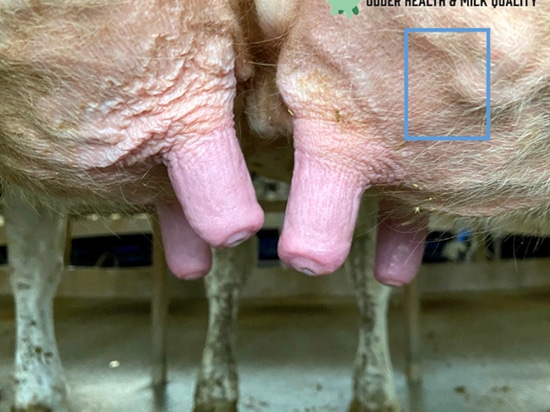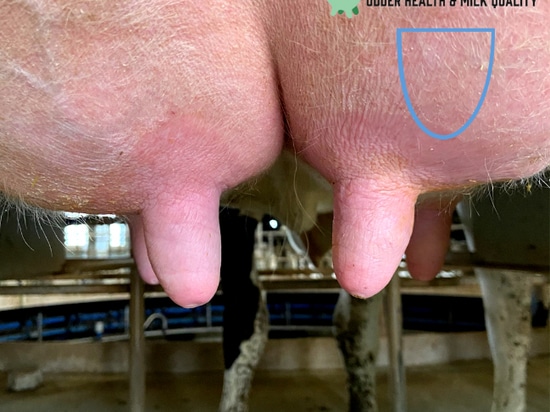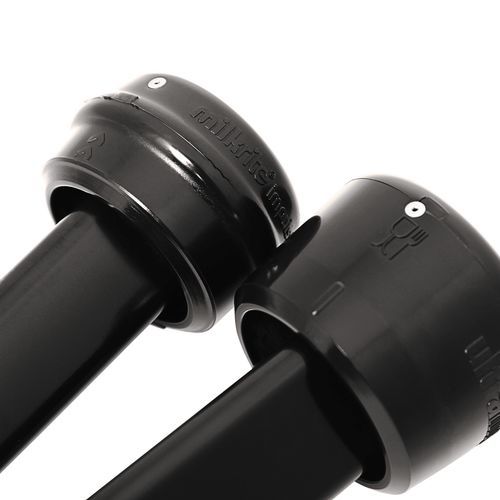
#Livestock
Udder and teat morphology: why is it the key to your milking efficiency?
Milking efficiency stems from the combination of healthy animals, the right milking routine using reliable components, and cost optimization. How to achieve it? Make sure you know your cows' udder and teat morphology and let it drive your choices.
“Animals should not adapt to liners, but rather liners should adapt to the herd.”
In line with the 10 questions to understand if you are using the right liners for your herd, discussed in the previous episode, we would like to open our new discussion with this crucial statement. In fact, this clarifies how essential knowing your herd is, not only in terms of quantity of milk produced but also as far as teat features, to achieve the highest milking efficiency and excellent milk quality, optimizing costs. In order to highlight the predominant aspects to consider to choose the right liner for your herd, ensuring maximum respect of the udder health, we have interviewed Giovanni Centonze, Udder Health and Milk Quality Consultant.
Are cows’ teats all alike?
“Dairy cows’ udders have only a few aspects in common:
- They are made up of four separate quarters.
- Each quarter consists of alveolar tissue, an udder cistern, and a teat.
- Each quarter secrets milk.
On the other hand, many are differences among cows, primarily determined by the breed:
- There is a different degree of quarters’ development. Rear quarters could be, for instance, bigger than front ones.
- Udder and teats exist in several different shapes and dimensions.
- There are differences related to the quantity and the quality of milk produced.”
Within the same breed, could further differences among dairy cattle’s udders?
“Yes, they could. This mainly relates to morphometrical features, including morphology and dimensions.
As far as morphology, broadly speaking it is possible to distinguish between three main teat end shapes:
- Pointed, shaped like cones, meaning that they are larger at the base, becoming thinner and thinner throughout the body, ending up with a pointed final part.
- Flat, shaped like cylinders, with a flat final part.
- Rounded, ending up with a rounder top.
Focusing now on dimensions, two are the main factors affecting the classification:
- Diameter, which allows distinguishing between thin, medium, or large.
- Length, which leads to considering udders as short, medium, or long.”
Why considering teat features is important?
“Teat shape and dimensions affect both cows’ milk ability and resistance to mastitis: since the udder is the only part in direct contact with the milking system, it is the first line of defence against bacteria responsible for teat infections.
Therefore, each milking should aim to get more milk in the shortest time possible, and without damaging teat tissue, rather preserving its physical barrel function.”
What are the possible causes of udder damages?
“If at the end of the milking it is possible to spot alteration in teat tissue, such as congestion, swelling, redness, or even hyperkeratosis, this means that milking is weakening cow’s defences. Thus, it is advisable to rely on the help of an expert, like Giovanni, who can lead a careful evaluation on a significant number of animals, in order to obtain the percentage of prevalence of these pathological alterations. Afterward, it is indispensable to understand if it complies with the acceptance limits and, if necessary, investigate the possible causes of these issues:
- Wrong milking routine
- Wrong system set-up or maintenance
- Wrong liner choice.”
How is it possible to understand if liners are suitable for the udders of your herd?
“To understand if the liners chosen comply with the teat shapes of your herd, it is necessary to implement an objective measurement of the dimensions of a significative number of udders and compare them with the features of the liners.
When choosing milking liners, it is mandatory to remember that animals should not adapt to liners, but rather liners should adapt to the herd. As a consequence, the more homogeneous teat dimensions are, the easier this stage will be.
Therefore, I strongly advise farmers to focus on their animals’ needs, without ever ignoring them. This is the key to achieving better results in terms of milking performance and profitability. In fact, the higher the care for the health of the herd is, the better milk quality, while the lower economical losses due to mastitis will be.”
We hope this expert contribution helped you understand the importance of putting your animals at the core of every choice you make, as well as to rely on the advice of competent people and reliable products, to ensure you fully achieve your goals.
Along with suggesting the right liner for your animals’ needs, we are here to support you with further insights on how to improve your milking efficiency. Don’t miss our next Blog episode!






